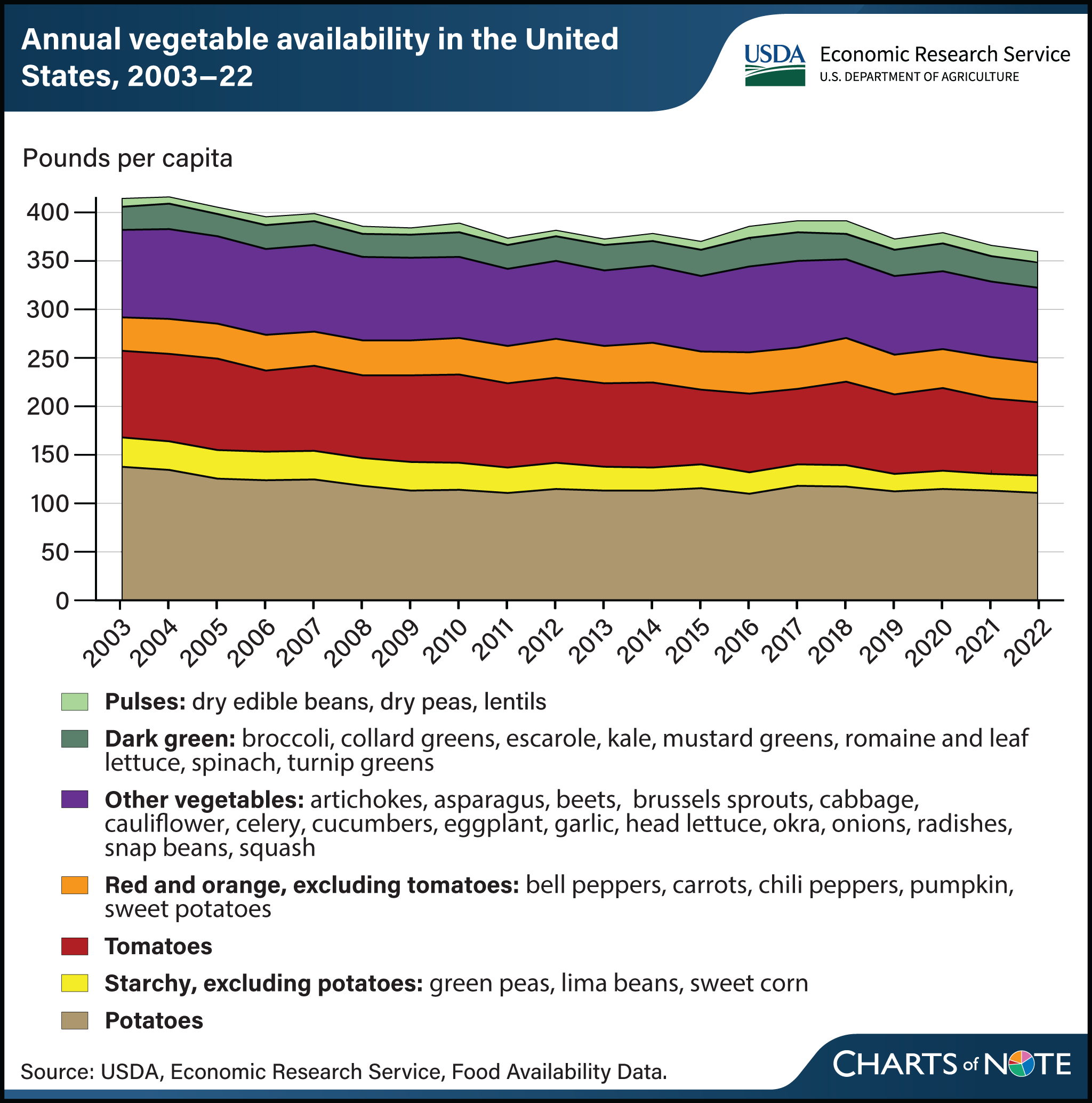Vegetable availability in the United States continued two-decade decline in 2022
- by Andrzej Blazejczyk and Linda Kantor
- 5/21/2024

The amount of vegetables available for consumption in the United States decreased 13 percent to 359.1 pounds per capita in 2022 from 413.9 pounds in 2003. The Dietary Guidelines for Americans Healthy Eating Patterns divide vegetables into five subgroups based on their nutrient content: pulses (dry beans, peas, lentils), dark green, other vegetables, red and orange (including tomatoes), and starchy (including potatoes). Each offers an array of important vitamins, minerals, and dietary fiber. Potatoes and tomatoes were further separated into individual subgroups because of their popularity. Potatoes, tomatoes, and the other vegetables subgroup accounted for the largest shares of the total during the 20-year period at more than 20 percent each. The combined share of starchy (excluding potatoes), tomatoes, other vegetables, and potatoes declined to 78 percent of the total in 2022 from nearly 84 percent in 2003. Across the last two decades, the combined share of pulses, red and orange (excluding tomatoes), and dark green vegetables available in the U.S. food supply increased to nearly 22 percent from 16 percent of the total. The availability of pulses increased the most during this period, led by a 243-percent jump in dry peas. However, pulses made up less than 3 percent of total vegetable availability in 2022. This chart uses data from USDA, Economic Research Service’s Food Availability (Per Capita) Data System, which provides annual estimates of the per capita availability for more than 200 food commodities consumed in the United States, updated in May 2024.

